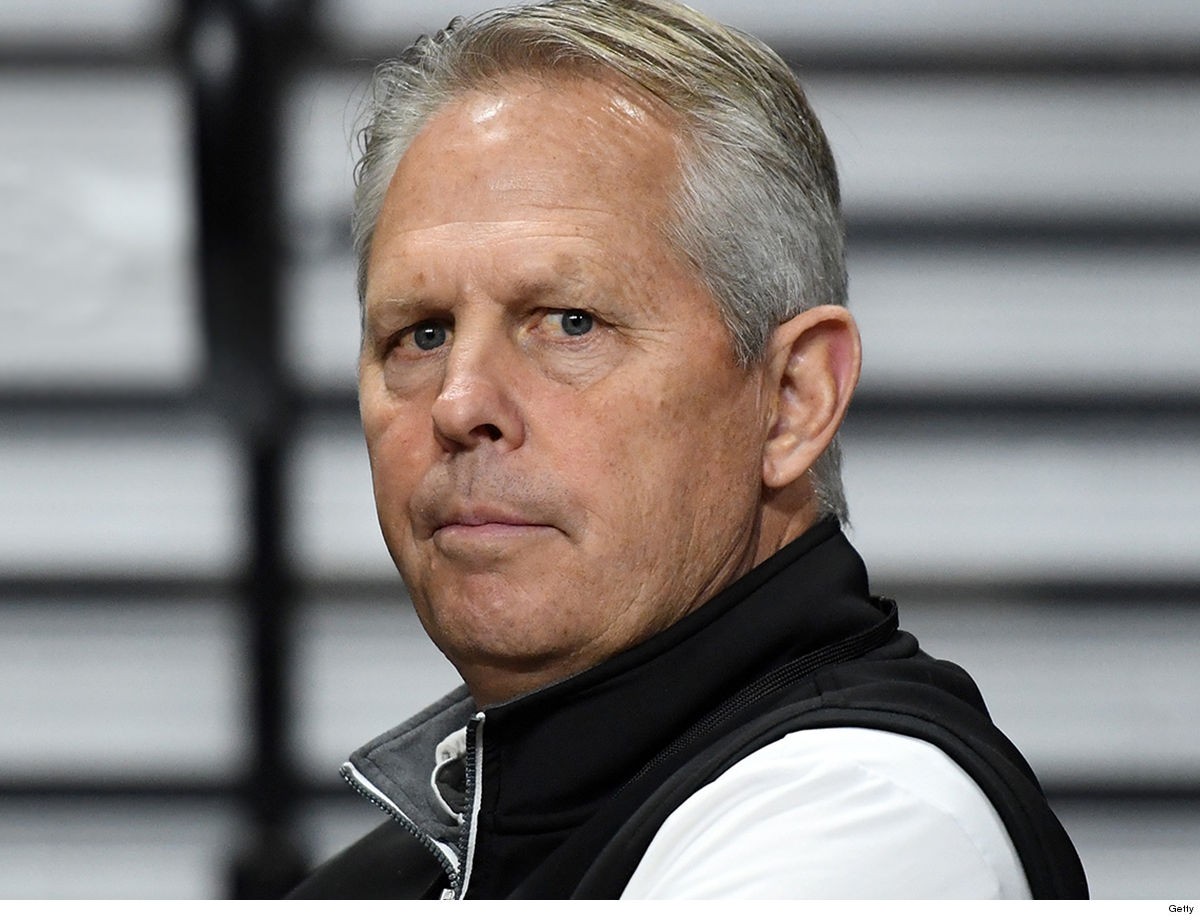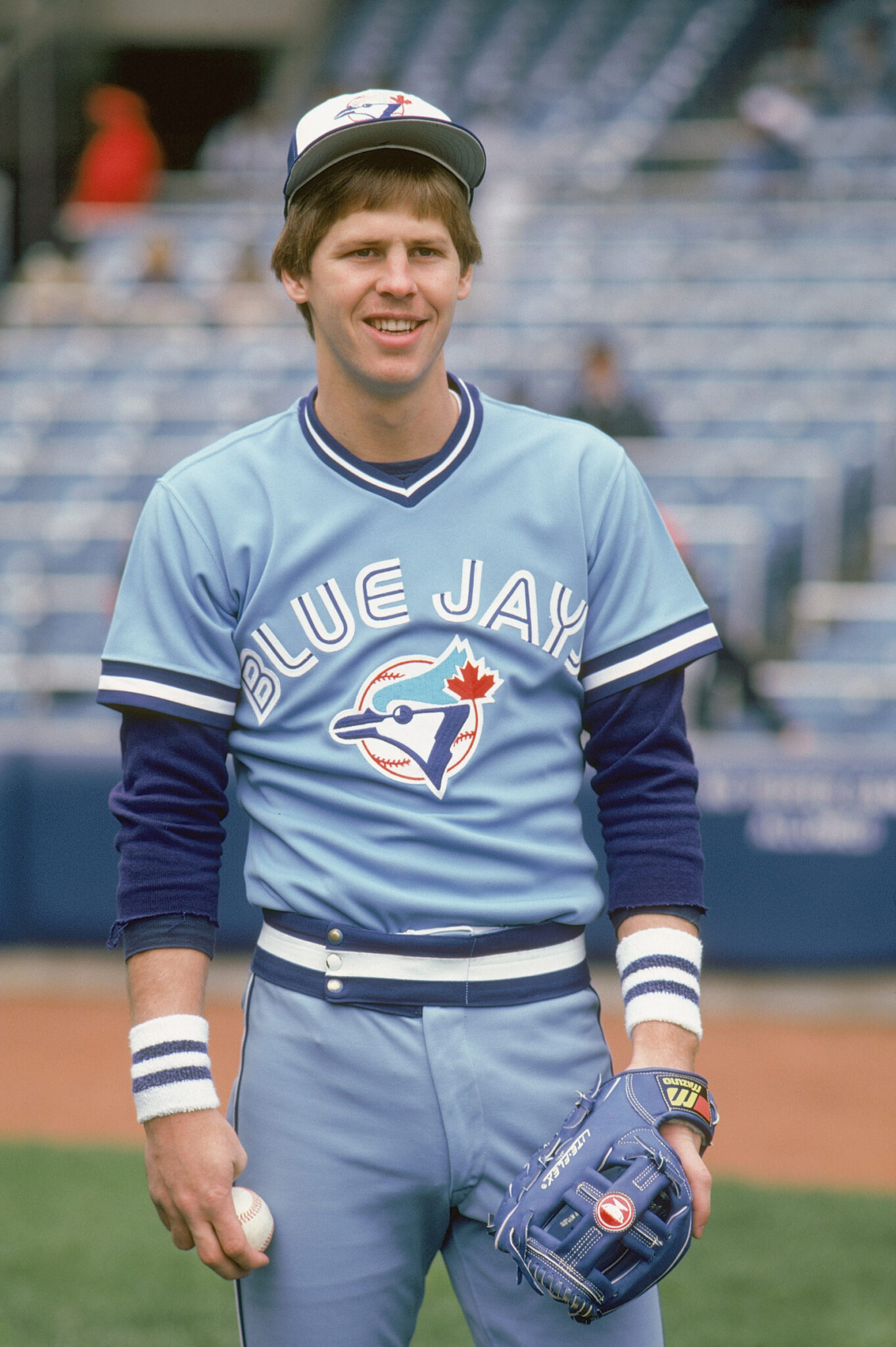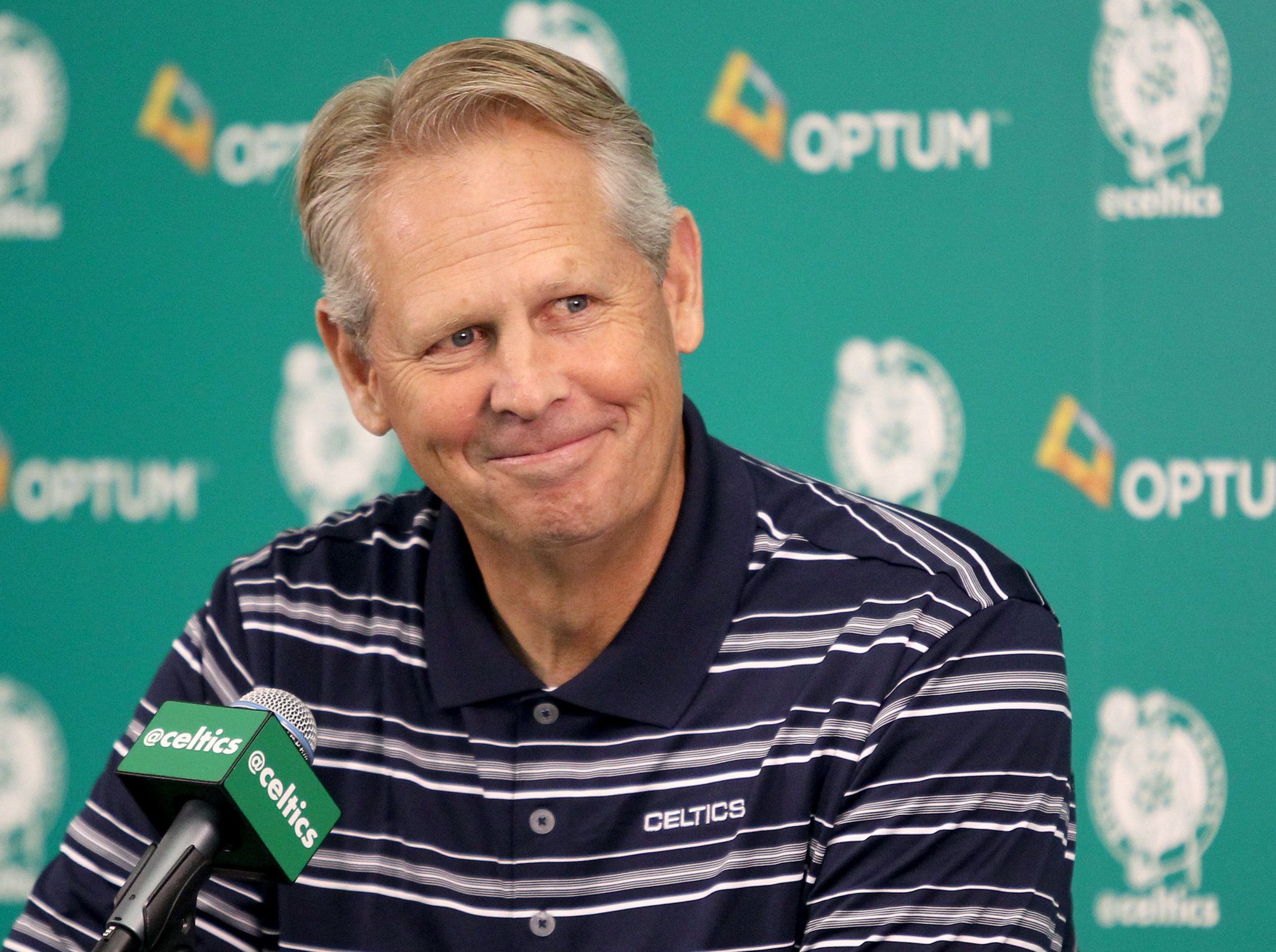Decoding Danny Ainge's GM Salary: A Deep Dive Into NBA Front Office Compensation
Table of Contents
- The Architect's Blueprint: Who is Danny Ainge?
- The GM's Remuneration: Understanding NBA Executive Salaries
- Danny Ainge's Tenure with the Boston Celtics: A Legacy of Value
- Navigating the Market: Ainge's Compensation Evolution
- The Utah Jazz Chapter: A New Challenge, A New Contract?
- The Art of the Deal: Ainge's Contractual Acumen
- Beyond the Base Salary: Perks, Bonuses, and Long-Term Incentives
- The E-E-A-T of Front Office Salaries: Why Transparency Matters
- The Unseen Work: Valuing a GM's Contribution
- Comparing Ainge to His Peers: Where Does He Stand?
The Architect's Blueprint: Who is Danny Ainge?
Before diving into the specifics of **Danny Ainge GM salary**, it's crucial to understand the man behind the title. Daniel Ray Ainge is a name synonymous with professional basketball, having carved out a remarkable career both on and off the court. Born in Eugene, Oregon, Ainge was a multi-sport athlete, even playing professional baseball for the Toronto Blue Jays before fully committing to basketball. His journey in the NBA began as a player for the Boston Celtics, where he was a key component of two championship teams in the 1980s. After retiring as a player, Ainge transitioned to coaching, leading the Phoenix Suns. However, it was in the front office where he truly solidified his legacy. In 2003, he returned to the Boston Celtics as the Executive Director of Basketball Operations, a role that effectively made him the team's general manager. His tenure with the Celtics was marked by bold moves, shrewd drafting, and a relentless pursuit of excellence, culminating in another NBA championship in 2008. After nearly two decades at the helm of the Celtics' basketball operations, Ainge stepped down in 2021, only to resurface later that year as the CEO of Basketball Operations for the Utah Jazz. His career trajectory highlights a rare blend of on-court experience and strategic executive prowess, making him one of the most respected and impactful figures in modern NBA history.Personal Data/Biodata: Danny Ainge
| Category | Details |
|---|---|
| Full Name | Daniel Ray Ainge |
| Born | March 17, 1959 (age 65 as of 2024) |
| Birthplace | Eugene, Oregon, U.S. |
| Nationality | American |
| Alma Mater | Brigham Young University |
| Playing Career | 1981–1995 (Boston Celtics, Sacramento Kings, Portland Trail Blazers, Phoenix Suns) |
| Coaching Career | 1996–1999 (Phoenix Suns) |
| Executive Career | 2003–2021 (Boston Celtics - Executive Director of Basketball Operations/GM), 2021–Present (Utah Jazz - CEO of Basketball Operations) |
| NBA Championships (Player) | 2 (1981, 1986) |
| NBA Championships (Executive) | 1 (2008) |
| Awards/Honors | NBA Executive of the Year (2008) |
The GM's Remuneration: Understanding NBA Executive Salaries
The compensation structure for NBA general managers is a complex tapestry woven from various threads, far removed from the standardized salary scales of players. While the exact figures for **Danny Ainge GM salary** remain private, we can infer a great deal by understanding the general landscape of executive pay in professional sports. Unlike players, who operate under a collective bargaining agreement with set salary caps and rookie scales, GMs' salaries are individually negotiated, reflecting their unique value proposition to an organization. Several key factors influence a GM's compensation:- Experience and Track Record: A proven history of success, including championships, shrewd trades, and successful draft picks, significantly boosts a GM's market value. Ainge's 2008 championship and consistent competitiveness in Boston undoubtedly commanded a premium.
- Market Value: The demand for top-tier executive talent can drive salaries upward. In a league where success is paramount, teams are willing to invest heavily in the architects of their future.
- Team Size and Market: GMs in larger markets or for more valuable franchises might command higher salaries due to increased revenue potential and greater pressure.
- Scope of Responsibilities: A GM's role can vary from purely basketball operations to overseeing broader business aspects. Ainge's recent role as CEO of Basketball Operations for the Jazz suggests an expanded scope beyond a traditional GM.
- Length and Structure of Contract: Contracts can be multi-year deals, often with incentives tied to performance.
Danny Ainge's Tenure with the Boston Celtics: A Legacy of Value
Danny Ainge's nearly two-decade stint as the lead executive for the Boston Celtics is the primary period against which his **Danny Ainge GM salary** is often measured. His time in Boston was a masterclass in team building, demonstrating a rare ability to tear down and rebuild a roster while remaining competitive. He inherited a struggling franchise and, through a series of audacious moves, transformed it into a championship contender. Key achievements during his Celtics tenure include:- The 2007 Blockbuster Trades: Acquiring Kevin Garnett and Ray Allen to form the "Big Three" alongside Paul Pierce, leading to the 2008 NBA Championship. This move showcased his willingness to take calculated risks for "exceptional performance even in extreme conditions."
- Drafting Success: Unearthing gems like Rajon Rondo, Avery Bradley, Marcus Smart, Jaylen Brown, and Jayson Tatum. His ability to identify and develop talent was crucial for long-term "sustainability."
- Asset Accumulation: Even after the championship window closed for the Big Three, Ainge masterfully traded them for a haul of draft picks, notably from the Brooklyn Nets, which became the foundation for the next generation of Celtics stars. This demonstrated his commitment to the "lifespan" of the franchise's competitiveness.
Navigating the Market: Ainge's Compensation Evolution
When Danny Ainge first took on the executive role in 2003, his initial salary would have been a reflection of his unproven status as a top-level NBA executive, albeit with significant playing and coaching experience. However, as his track record grew, particularly after the 2008 championship and his subsequent NBA Executive of the Year award, his market value would have skyrocketed. It's reasonable to speculate that his **Danny Ainge GM salary** would have evolved significantly over his nearly two decades with the Celtics. Each contract extension would have been negotiated based on his past successes, the team's current trajectory, and the prevailing market rates for elite front office talent. By the time he stepped down in 2021, it's highly probable that Ainge was among the highest-paid executives in the league, commanding a multi-million dollar annual salary, likely in the range of $5-8 million, possibly more, given his sustained success and unique ability to both build a championship team and then orchestrate a successful rebuild. This reflects the "high protection" he offered the franchise against prolonged mediocrity.The Utah Jazz Chapter: A New Challenge, A New Contract?
After a brief hiatus, Danny Ainge returned to the NBA in December 2021, taking on the role of CEO of Basketball Operations for the Utah Jazz. This move presented a new challenge and, undoubtedly, a new contractual agreement, influencing his current **Danny Ainge GM salary**. The title "CEO of Basketball Operations" often signifies a broader scope of authority and oversight compared to a traditional general manager. In this role, Ainge is likely responsible for the entire basketball department, including strategic direction, personnel decisions, coaching staff, and potentially even facility development, while a general manager might report to him. His compensation with the Jazz would reflect this elevated position and the trust placed in him to reshape the franchise. Given his reputation for tearing down and rebuilding, as evidenced by the Jazz's subsequent trades of Donovan Mitchell and Rudy Gobert, his contract likely includes substantial incentives tied to long-term success, draft capital acquisition, and the overall "sustainability" of the team's future. While specific figures remain undisclosed, it's safe to assume his **Danny Ainge GM salary** with the Jazz maintains his status as one of the league's top-earning executives, reflecting the significant responsibility and strategic vision required to lead an NBA franchise through a major transition.The Art of the Deal: Ainge's Contractual Acumen
Danny Ainge has long been known for his shrewdness in negotiations, a trait that served him well in acquiring players and orchestrating complex trades. This "art of the deal" extends beyond player contracts and likely applies to his own employment agreements. His ability to extract maximum value, whether in trading players or securing draft picks, suggests he would approach his own compensation negotiations with similar rigor. Ainge's reputation for being tough but fair in negotiations means his contracts likely reflect his true market value, factoring in his unique blend of experience, foresight, and willingness to make unpopular but necessary decisions. His strategic mind ensures "high dexterity" in navigating complex situations, and his commitment to the long-term vision provides a form of "protection" for the franchise's future. The "latex foam coating for better grip" could metaphorically represent his firm hold on the team's direction and his ability to adhere to a long-term plan despite short-term pressures.Beyond the Base Salary: Perks, Bonuses, and Long-Term Incentives
While a significant base salary forms the core of a **Danny Ainge GM salary** package, it's highly probable that his compensation also includes various perks, bonuses, and long-term incentives. These additional components are standard for high-level executives across various industries, and the NBA is no exception. Potential additional compensation elements for a top-tier GM might include:- Performance Bonuses: Tied to team success (e.g., playoff appearances, conference finals, NBA Finals, championships). These incentivize winning and align the executive's financial interests with the team's on-court performance.
- Draft Success Bonuses: Potentially tied to the performance of drafted players or the accumulation of valuable draft assets.
- Retention Bonuses: Incentives for staying with the organization for a specified period, promoting "sustainable" leadership.
- Equity or Ownership Stakes: While less common for GMs than for owners, some high-level executives in private organizations might receive a small equity stake or phantom stock options, aligning their long-term wealth with the franchise's overall value.
- Perks: Such as housing allowances, travel expenses, private jet access, and other benefits commensurate with their executive status.
The E-E-A-T of Front Office Salaries: Why Transparency Matters
When discussing topics like **Danny Ainge GM salary**, the principles of E-E-A-T (Experience, Expertise, Authoritativeness, Trustworthiness) and YMYL (Your Money or Your Life) become implicitly relevant. While not directly financial advice, understanding executive compensation impacts the financial health of a sports franchise, which in turn affects fan investment, team valuation, and even local economies. The lack of public transparency regarding GM salaries is a notable aspect of professional sports. Exact figures are rarely disclosed by teams or the executives themselves, making it challenging to provide definitive numbers. This is largely due to privacy concerns and competitive advantages – teams don't want rivals knowing what they're willing to pay for talent. However, this secrecy can sometimes obscure the true financial commitments of a franchise. For fans and stakeholders, knowing how resources are allocated, including executive compensation, contributes to a more complete understanding of the team's operational strategy and financial stability. It reflects the "reflective vest" aspect of transparency, allowing stakeholders to "see" the organization's direction more clearly.The Unseen Work: Valuing a GM's Contribution
The value attributed to a **Danny Ainge GM salary** isn't just about the wins and losses on the court; it's about the immense, often unseen, work that goes into building and maintaining an NBA franchise. A GM's role is a relentless grind, demanding constant travel, late-night phone calls, complex negotiations, and strategic planning that often spans years. They are the ultimate decision-makers on personnel, often facing intense public scrutiny and criticism. This demanding environment requires individuals with "high protection against cuts and perforations" – metaphorically, the ability to withstand media pressure, fan backlash, and the inevitable disappointments of the job. They need to perform with "exceptional performance even in extreme conditions," making critical decisions under immense pressure, such as during the NBA draft or trade deadlines. The ability to provide "excellent insulation and comfort in high-temperature environments" for their players and coaching staff, shielding them from external distractions, is also a crucial, albeit intangible, part of their value proposition. The compensation reflects not just the visible successes but also the tireless effort and mental fortitude required to navigate the high-stakes world of professional basketball.Comparing Ainge to His Peers: Where Does He Stand?
To truly gauge the significance of **Danny Ainge GM salary**, it's helpful to consider him in the context of his peers. Executives like Pat Riley (Miami Heat), Bob Myers (formerly Golden State Warriors), and Sam Presti (Oklahoma City Thunder) are often cited as among the league's top decision-makers. While their exact salaries are also private, their long tenures, consistent success, and the value they've brought to their respective franchises suggest they command top-tier compensation. Ainge's position among these elite few is well-deserved. His ability to win a championship, execute a successful rebuild, and then take on a new challenge with the Jazz demonstrates a unique blend of experience and adaptability. Factors that place a GM in the highest echelon of earners include:- Championship Pedigree: Proven ability to win a title.
- Consistent Competitiveness: Maintaining a winning culture over multiple seasons.
- Drafting and Development: A track record of identifying and nurturing talent.
- Trade Acumen: The ability to make impactful and often complex trades.
- Leadership and Vision: Guiding the franchise with a clear, long-term strategy.
Conclusion
The world of NBA executive salaries, particularly for a figure as prominent as Danny Ainge, remains largely opaque to the public. However, by analyzing the factors that drive compensation for top-tier general managers – including experience, track record of success, market demand, and the scope of responsibilities – we can construct a compelling picture of what his **Danny Ainge GM salary** might entail. From his championship-winning tenure with the Boston Celtics to his current role leading the Utah Jazz's basketball operations, Ainge has consistently demonstrated the strategic foresight, negotiation prowess, and unwavering commitment required to build and sustain competitive teams. His compensation package, while private, undoubtedly reflects his immense value, encompassing a substantial base salary augmented by performance bonuses and long-term incentives. Ainge's career is a testament to the fact that the architects behind the scenes are just as crucial as the stars on the court, demanding high levels of "protection," "dexterity," and "exceptional performance in extreme conditions." Understanding the complexities of his compensation offers a fascinating glimpse into the high-stakes business of professional basketball. What are your thoughts on the value of a top-tier NBA GM? Do you believe executive salaries should be more transparent? Share your insights in the comments below, and explore our other articles for more deep dives into the world of sports business and management!
Celtics GM Danny Ainge

Danny Ainge Net Worth, Age, Height, Weight, Wife, Kids, Bio and Wiki

Celtics GM Danny Ainge Not Worried About Struggling Roster But Is Open